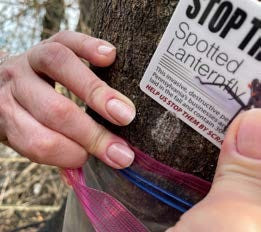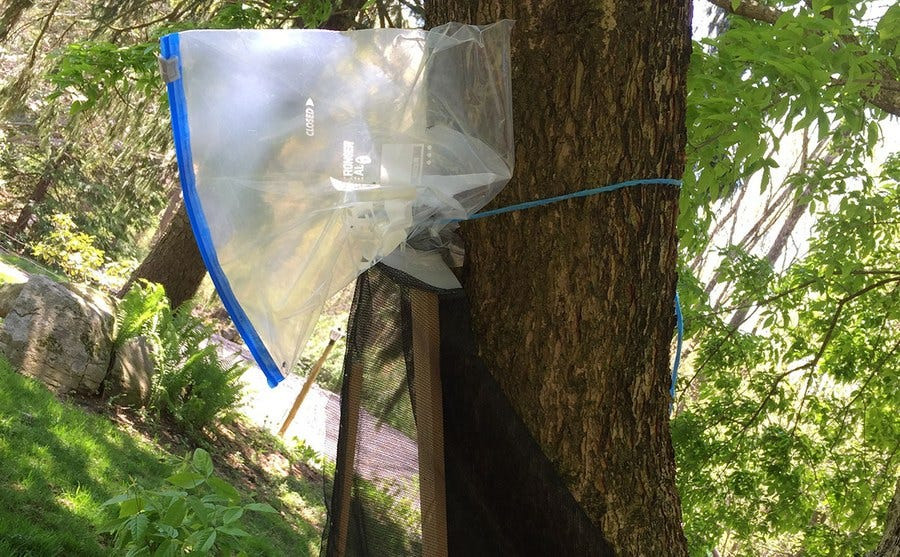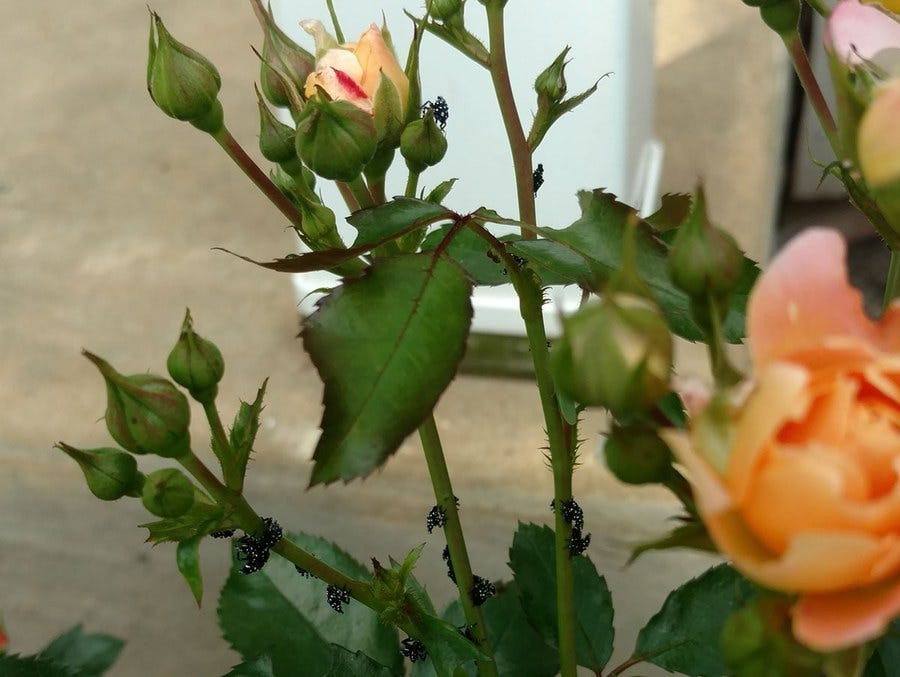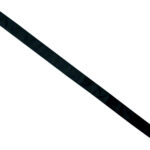Spotted lanternfly infestations can be a real headache, but don’t worry, flyermedia.net is here to help you get rid of these pesky invaders. This guide provides effective strategies for controlling spotted lanternflies and protecting your plants. Learn about the latest methods and find practical solutions to keep your yard and garden healthy.
1. Understanding the Spotted Lanternfly
What is the Spotted Lanternfly?
The Spotted Lanternfly (Lycorma delicatula) is an invasive planthopper native to parts of Asia. It was first detected in North America in 2014 in southeastern Pennsylvania and has since spread to other U.S. states. According to the Pennsylvania Department of Agriculture, this insect poses a significant threat to agriculture and forestry due to its feeding habits.
What Does Spotted Lanternfly Look Like?
Identifying the Spotted Lanternfly at different life stages is crucial for effective management:
- Eggs: Laid in the fall (September to December), egg masses are about an inch long, covered with a mud-like substance, and contain an average of 30-50 eggs.
- Nymphs: These go through four nymphal stages (instars) before becoming adults. The first three instars are black with white spots, while the fourth instar is red with white dots and black stripes.
- Adults: Emerging in July, adults are about 1 inch long with black abdomens and yellow bands. Their forewings are gray with black spots, and their hind wings have red, black, and white patches.
 Spotted Lanternfly Egg Mass
Spotted Lanternfly Egg Mass
Figure 2. Variations in egg mass appearance. Credit: Heather Leach and Emelie Swackhamer, Penn State.
Where is the Spotted Lanternfly Found?
The Spotted Lanternfly has spread across several U.S. states. For an updated distribution map, check the New York State Integrated Pest Management Program. The spread is primarily due to natural expansion and human-assisted movement along rail lines and highways.
2. Identifying the Signs of Infestation
What are the Symptoms of Spotted Lanternfly Damage?
Recognizing the signs of Spotted Lanternfly infestation can help you take early action:
- Honeydew: A sugary liquid excreted by SLF, attracting ants, wasps, and other insects.
- Sooty Mold: A black fungus that grows on honeydew, covering leaves and reducing photosynthesis.
- Plant Stress: Heavy feeding can weaken plants, causing branch damage and dieback.
- Feeding Damage: Look for sap oozing from small holes on the bark and wilting or yellowing leaves.
What Plants Do Spotted Lanternflies Affect?
Spotted Lanternflies feed on a wide range of plants, including:
- Grapevines
- Hops
- Ornamental landscape plants
- Tree-of-heaven (Ailanthus altissima)
- Black walnut saplings
According to research from Penn State Extension, Spotted Lanternflies can feed on over 70 different plant species, making it crucial to monitor your garden and yard regularly.
3. Effective Methods to Get Rid of Spotted Lanternfly
How to Control Spotted Lanternfly Eggs?
Destroying Spotted Lanternfly eggs is one of the most effective ways to control their population:
- Scraping: Use a scraper or putty knife to scrape egg masses off surfaces into a bag or container filled with rubbing alcohol or hand sanitizer.
- Smashing: Thoroughly smash the eggs after scraping to ensure they are destroyed.
It’s important to inspect trees, decks, houses, outdoor equipment, and rocks for egg masses. Remember, each egg mass contains about 30-50 eggs, so destroying them can significantly reduce the next generation.
 Destroy Spotted Lanternfly Eggs
Destroy Spotted Lanternfly Eggs
Figure 6. Destroy SLF eggs by scraping them from the surface where they were laid into an alcohol solution. Credit: Emelie Swackhamer.
How to Use Traps to Control Spotted Lanternfly?
Trapping is another effective method for managing Spotted Lanternfly populations:
- Circle Traps: These funnel-style traps capture nymphs and adults as they crawl up tree trunks. You can purchase these commercially or build your own.
- Sticky Bands: Wrap sticky bands around tree trunks to capture SLF. However, always use a wildlife barrier to prevent trapping other animals, such as birds and squirrels.
How Do Circle Traps Work?
Circle traps are designed to intercept Spotted Lanternflies as they move up the tree trunk to feed. To set up a circle trap:
- Wrap the material tightly around the tree about four feet from the ground.
- Secure it with staples or pushpins.
- Ensure the trap is tightly fitted against the tree bark to prevent SLF from crawling underneath.
 Homemade Spotted Lanternfly Circle Trap
Homemade Spotted Lanternfly Circle Trap
Figure 8. A homemade circle trap secured to a tree. Credit: Emelie Swackhamer, Penn State
What are the Guidelines for Using Sticky Bands?
If you choose to use sticky bands, follow these guidelines:
- Wildlife Barrier: Always use a wildlife barrier, such as mesh netting, to prevent capturing other animals.
- Regular Checks: Check the bands daily to ensure no other animals are trapped.
- Proper Installation: Secure the screening to the tree, leaving the bottom open for SLF to enter.
How to Control Spotted Lanternfly with Insecticides?
Insecticides can be an effective option when dealing with high populations of Spotted Lanternfly. Here are some key considerations:
- Contact Insecticides: Kill SLF on contact and are effective for quick control.
- Systemic Insecticides: Absorbed by the plant and kill SLF when they feed on it, providing longer-term control.
Always read and follow the label directions carefully when using any insecticide.
What are the Different Types of Insecticides?
- Contact Insecticides: These include products like pyrethrins and insecticidal soaps. They are effective for killing nymphs and adults but require direct contact.
- Systemic Insecticides: These include products containing dinotefuran or imidacloprid. They are absorbed by the plant and can provide weeks or months of control.
Characteristics of Contact Versus Systemic Insecticides
| Characteristic | Contact Insecticides | Systemic Insecticides |
|---|---|---|
| How they kill | SLF are killed when the chemical contacts the body of the insect. | Systemic insecticides are absorbed by roots, bark, or leaves and moved through the vascular system to other parts of the plant, killing the insect when it feeds on the treated plant. |
| Application method | Apply with equipment appropriate to the product and spray location. Most products are applied with sprayers. | Systemic insecticides are usually applied by professional, licensed applicators. There are several methods: trunk injection, trunk spray, soil drench or injection, and foliar sprays. |
| Longevity | Residual activity is dependent on the product, but can be from 0 to 14 days. | This depends on application method and product, but can be several months. |
| Recommended for SLF? | Target populations of nymphs or adults; to protect pollinators, do not apply insecticides to blooming plants. | Systemic insecticide applications are mostly recommended to target adult SLF. Apply systemic insecticides only after bloom is finished to protect pollinators and other beneficial insects. |
What are the Guidelines for Contact Insecticide Applications?
- Thorough Coverage: Ensure you thoroughly cover the insect’s body for effective control.
- Blooming Plants: Avoid spraying blooming plants to protect pollinators.
- Potential Impact: Be aware of the potential impact on non-target organisms.
How to Apply Systemic Insecticides Effectively?
- Trunk Injection: Requires specialized equipment and is usually applied by professionals. It provides accurate dosing and minimizes environmental impact.
- Trunk Spray: Also known as bark banding, this involves spraying the trunk with insecticide. Ensure proper dosing based on tree size.
- Soil Drench: Apply the insecticide to the soil around the trunk. It’s best applied in early summer to trees with a history of SLF infestation.
Can Ovicides Kill Egg Masses?
Yes, dormant or horticultural oils can kill Spotted Lanternfly eggs. Applications made in the fall or between February and April can be effective. Higher concentrations of oil are generally more effective.
What are the Pesticide Safety Guidelines?
- Registered Insecticides: Only use insecticides registered with the EPA or PDA.
- Read the Label: Always read and follow the label directions carefully.
- Avoid Drift: Prevent the insecticide from drifting into unintended areas.
- Protective Clothing: Wear appropriate protective clothing and gear.
What are the Potential Non-Target Effects of Insecticides?
- Water Contamination: Take precautions to protect surface water and groundwater.
- Pollinators: Be aware of the potential impact on pollinators and other beneficial insects.
4. Cultural Control Methods for Spotted Lanternfly
What is Tree-of-Heaven?
Tree-of-heaven (TOH), Ailanthus altissima, is a preferred host plant for Spotted Lanternfly. Managing this invasive tree can help reduce SLF populations.
How to Manage Tree-of-Heaven?
- Identification: Learn to identify TOH and look for it on your property.
- Removal: Remove TOH using herbicides to kill the root system.
- Systemic Insecticides: As an alternative to complete removal, treat some TOH with systemic insecticides to attract and kill SLF.
 Spotted Lanternfly Nymphs on Rose Bush
Spotted Lanternfly Nymphs on Rose Bush
Credit: Brian Walsh, Penn State
Can Removing Preferred Host Plants Help?
Removing preferred host plants can help manage SLF populations by reducing their food source and preventing honeydew and sooty mold accumulation.
5. Monitoring for Spotted Lanternfly
Why is Regular Monitoring Important?
Regular monitoring of high-value plants helps you identify where SLF is feeding throughout the season. This allows you to focus your management efforts on specific areas.
What Monitoring Techniques Can be Used?
- Traps: Use traps to monitor SLF populations.
- Visual Inspection: Periodically inspect plants for signs of SLF.
- Damage Assessment: Don’t assume all plant damage is caused by SLF. Consider other factors like insects, diseases, and weather conditions.
6. Understanding Spotted Lanternfly Behavior
How Do Spotted Lanternflies Move?
Spotted Lanternfly nymphs and adults move from plant to plant throughout the season. This can make assessing population size difficult. Regular monitoring is crucial.
What Factors Cause Population Fluctuations?
SLF populations can fluctuate due to:
- Population density
- Host fitness
- Natural enemies
- Weather conditions
Observations in areas with long-term SLF infestations indicate that population numbers can drastically drop or rebound from season to season.
Do I Need to Treat Every Tree?
No, not every tree needs to be treated. Scout the area first and consider treating only if high populations are found and persist.
7. What if I Find a Spotted Lanternfly?
What Should I Do If I Find a Spotted Lanternfly?
If you find SLF in new areas, take a picture, collect samples, destroy them, and report your findings to your state’s agriculture authorities.
How to Prevent the Spread?
To prevent the spread of Spotted Lanternfly:
- Check your vehicle and outdoor items before traveling.
- Look for egg masses from fall to summer.
- Keep windows rolled up when you park under infested trees.
- Don’t store things or park under infested trees.
- Don’t move firewood.
What is the Quarantine Zone Checklist for Residents?
- Check vehicles for egg masses, nymphs, and adults.
- Inspect outdoor furniture, grills, and landscaping supplies.
- Keep windows rolled up when parking in infested areas.
- Report any sightings to state agriculture authorities.
8. Biological Control and Natural Predators
Are There Natural Predators of Spotted Lanternfly?
Currently, there are no known natural enemies that significantly reduce SLF populations in the United States. Some generalist predators (spiders, praying mantises, birds) may attack and eat SLF.
What About Fungal Pathogens?
Two species of fungal pathogens, including Beauveria bassiana, have been identified in Pennsylvania. Research is ongoing to optimize the use of these pathogens for SLF management.
9. Ongoing Research and Developments
What Research is Being Done on Spotted Lanternfly?
Research is ongoing to understand the biology and behavior of SLF and to find better management strategies. This includes studying tree health impact, economic injury levels, biological control options, and pesticide efficacy.
Where Can I Stay Updated on the Latest Information?
Stay up to date with the latest research and recommendations by visiting the Penn State Spotted Lanternfly website.
10. Spotted Lanternfly FAQ
What is the best way to get rid of Spotted Lanternfly eggs?
Scrape them off surfaces into a container with rubbing alcohol or hand sanitizer.
Will Spotted Lanternfly kill my trees?
SLF feeding can stress plants but is not known to kill trees except for grapevines, tree-of-heaven, and black walnut saplings.
How can I protect my plants from Spotted Lanternfly?
Monitor plants regularly, use traps, and consider insecticide treatments when necessary.
Are sticky bands safe for wildlife?
Not without a wildlife barrier. Always use mesh netting to prevent capturing other animals.
What are the signs of a Spotted Lanternfly infestation?
Honeydew, sooty mold, plant stress, and sap oozing from bark.
Do I need to hire a professional to treat for Spotted Lanternfly?
For systemic insecticide applications, hiring a certified professional is recommended.
What if I find Spotted Lanternfly outside the quarantine zone?
Report it to your state’s agriculture authorities immediately.
Is Tree-of-Heaven the only plant Spotted Lanternflies feed on?
No, they feed on over 70 different plant species.
How do I make a homemade circle trap?
Follow detailed guides available online, such as those from Penn State Extension.
Can I use dish soap to kill Spotted Lanternflies?
Insecticidal soaps can be effective as contact insecticides when applied directly to SLF.
Conclusion
Dealing with Spotted Lanternflies can be challenging, but with the right knowledge and strategies, you can effectively manage their populations and protect your plants. Remember to monitor your property regularly, use a combination of control methods, and stay informed about the latest research and recommendations.
Visit flyermedia.net for more information on pest control, gardening tips, and resources to help you maintain a healthy and vibrant landscape. Explore our site for expert advice and tools to tackle any gardening challenge!
Call to Action
Ready to take control of your Spotted Lanternfly problem? Visit flyermedia.net today for more expert advice, product recommendations, and resources to protect your plants and garden!
Address: 600 S Clyde Morris Blvd, Daytona Beach, FL 32114, United States
Phone: +1 (386) 226-6000
Website: flyermedia.net

